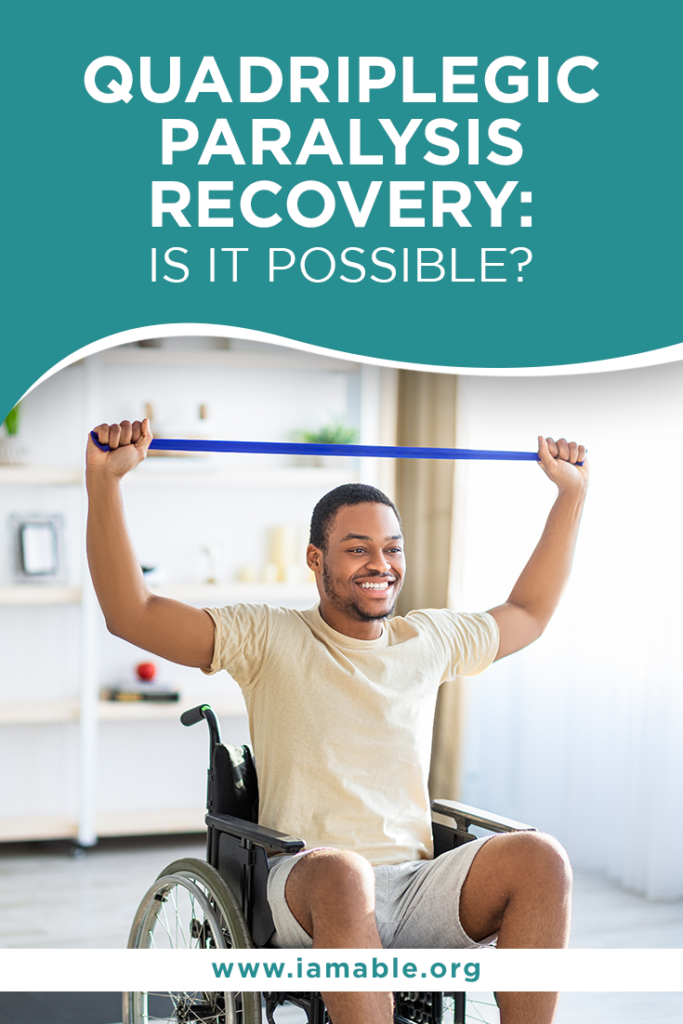Miami, FL 33186

Is there life after a quadriplegic injury? Learn more about the factors that affect quadriplegia paralysis recovery in Miami, FL, here.
Roughly 60 percent of spinal cord injuries turn out to be quadriplegic. It results in loss of movement and sensation in all the limbs and affects organs found within the upper body. With the impact of such injury, one might wonder, “Is quadriplegic paralysis Recovery in Miami, FL even possible?”.
Is there a life after this type of spinal cord injury? Moreover, what can you expect in your healing and recovery journey? Let’s break down the factors involve in paralysis recovery in Miami, FL, for quadriplegic SCI patients below.
Recovery outcomes greatly vary from one SCI patient to another. Some might need to wait for a couple of years to see improvements, while others might only need a few months. Below are the key factors that affect a patient’s quadriplegic paralysis recovery in Miami, FL.
The effect of an SCI or spinal cord injury largely depends on two things: the location and severity of the spinal cord lesion. Knowing a bit about these two can help you assess the damage to your spinal cord and possibly how fast you can recover.
In patients with a quadriplegic injury, the lesion occurs anywhere along the cervical or neck region. Compared to a paraplegic injury, this type of injury tends to cause worse paralysis because the cervical part of the spinal column controls several functions of the body.
In fact, according to studies, the lesions along the higher sections of the cervical spinal cord often resulted in a more severe form of paralysis.
This happens because several nerve roots suffer the impact, causing several muscle bundles to lose sensation and the ability to contract. Consequently, those that occur in lower spinal cord regions have a higher chance of recovering quickly.
Doctors classify SCI in two ways, a complete or incomplete injury. If you have a complete injury, it simply means that you totally lose movement and sensation on the affected region in your body. This mostly happens because your brain can no longer communicate with the damaged spinal cord and the nerve roots attached to your muscles.
On the one hand, if you get diagnosed with an incomplete injury, it means your spinal cord and nerve roots are not entirely severed. As a result, you have a higher chance of achieving a certain degree of mobility.
Each patient has a different timeline for a spinal cord paralysis recovery in Miami, FL. On average, the process starts about 6 to 12 months after the injury occurs.
At this point, the brain, along with other parts of the central nervous system (CNS), starts to rewire. The process allows damaged communication pathways to heal. This helps you to restore the function of the affected body part gradually.
An incomplete SCI injury can also recover after a year, provided that you undergo procedures like activity-based therapy. It will help boost the capability of your CNS to adapt and form new nerve connections.
Spinal shock syndrome is a common condition that develops after an SCI. According to a study, it’s highly prevalent in young patients who suffer from a traumatic injury.
It causes your muscles to become less responsive or utterly unresponsive to brain signals. Additionally, a spinal shock can also impact autonomic nerves, causing your bladder, intestines, blood vessels, heart, pupils, and sweat glands to malfunction.
Typically, a spinal shock goes away once the swelling in your spinal cord subsides. Some patients who experience this condition report improvements after several weeks.
Unfortunately, many patients have mistaken the symptoms of spinal shock as a sign of a complete SCI injury. That’s why it’s essential to get an accurate diagnosis. It also pays to be extra patient in observing your symptoms and see if they improve over time. This way, you can plan the best ways to manage your recovery phase.
Another factor that can affect your recovery journey from a quadriplegic injury is rehabilitative therapy. SCI patients turn to various kinds of treatments, including:
Living with paralysis can be filled with ups and downs. It can be scary and discouraging as you have to accept your new reality. However, it’s crucial to remember that an SCI injury isn’t the end of your story.
Your journey marks the beginning of a new chapter. The faster you embrace the situation, the better you get to take control of it and live your life to the fullest.
Here at I Am Able, we believe that life after paralysis recovery in Miami, FL is indeed possible. In fact, we want to share with you a copy of our eBook, 7 Steps to Thrive After Paralysis. It contains the essential steps to help you take on a new adventure after your injury.
Download our eBook today and start seeing your journey in a new light.
Grab our free e-book 7 Unbelievably Important Steps to Take to THRIVE after Paralysis by clicking the image below.
